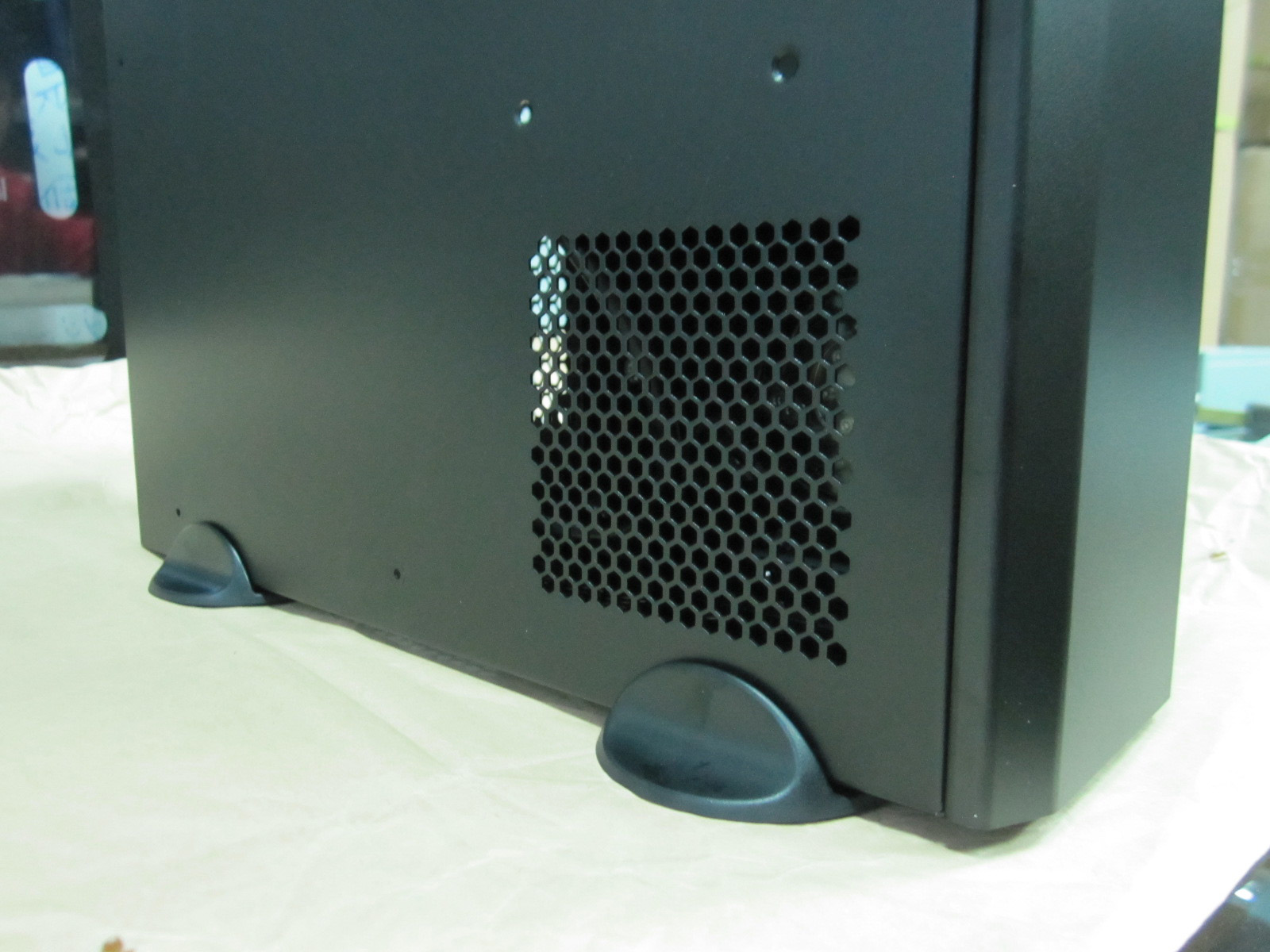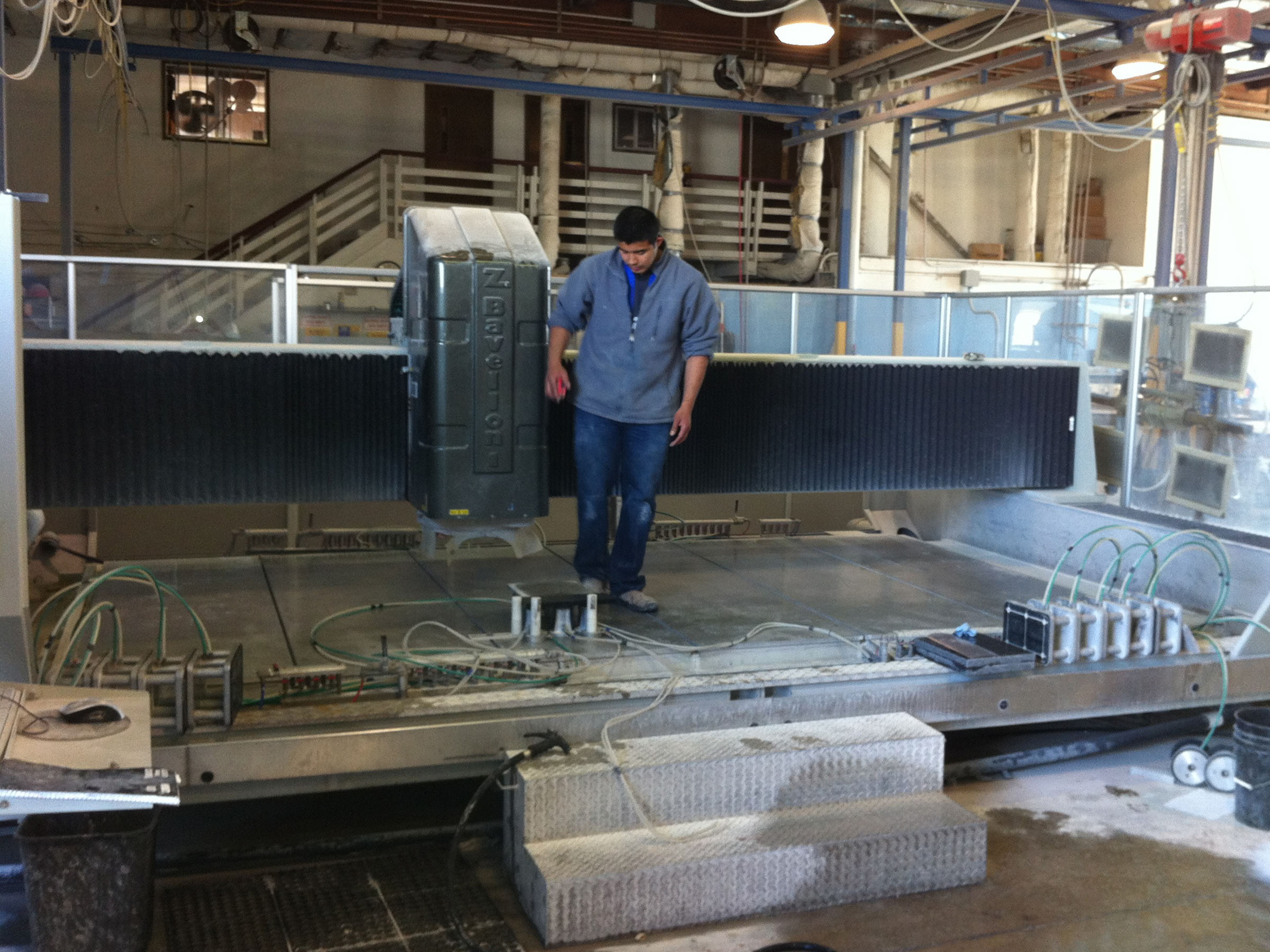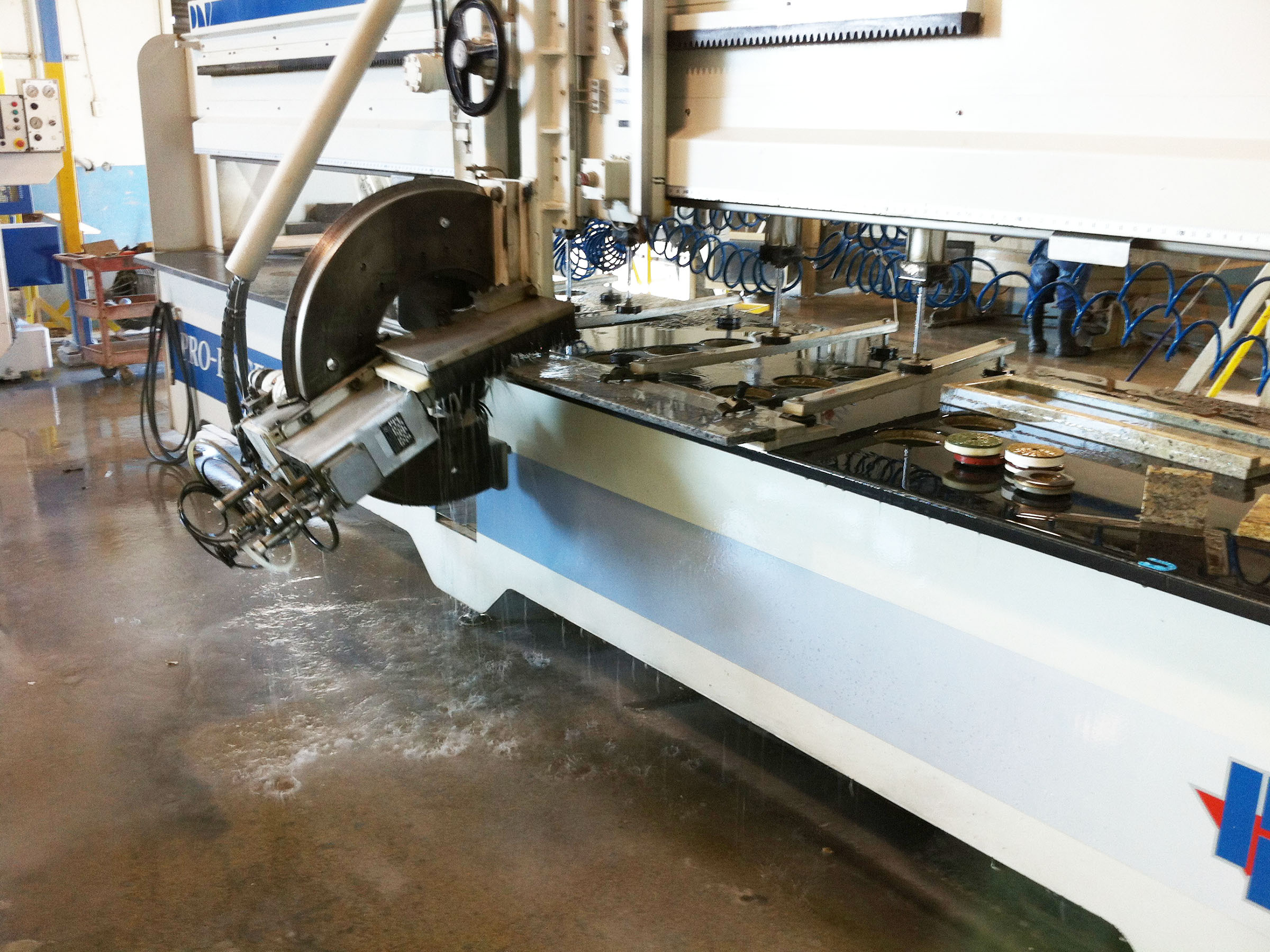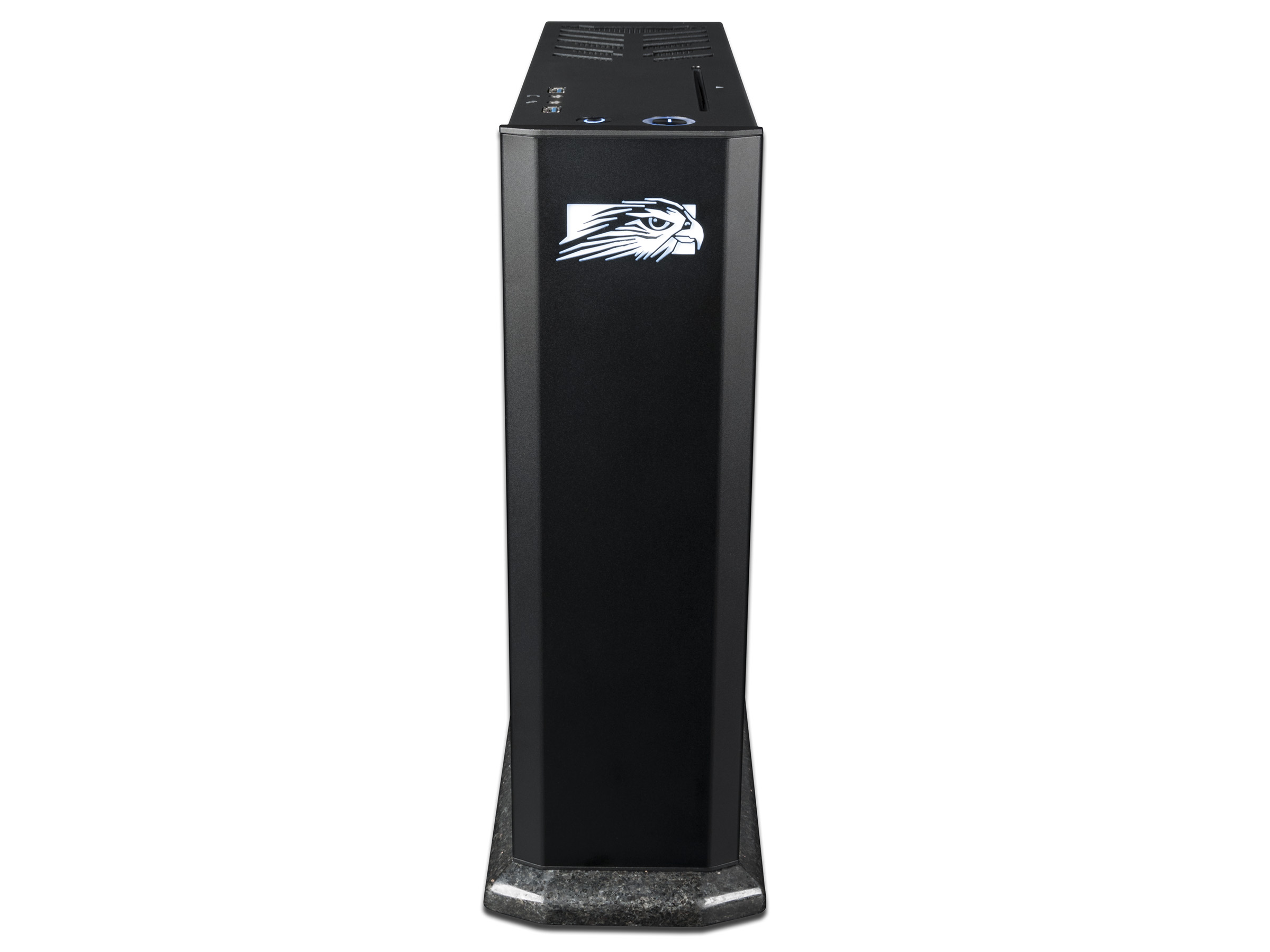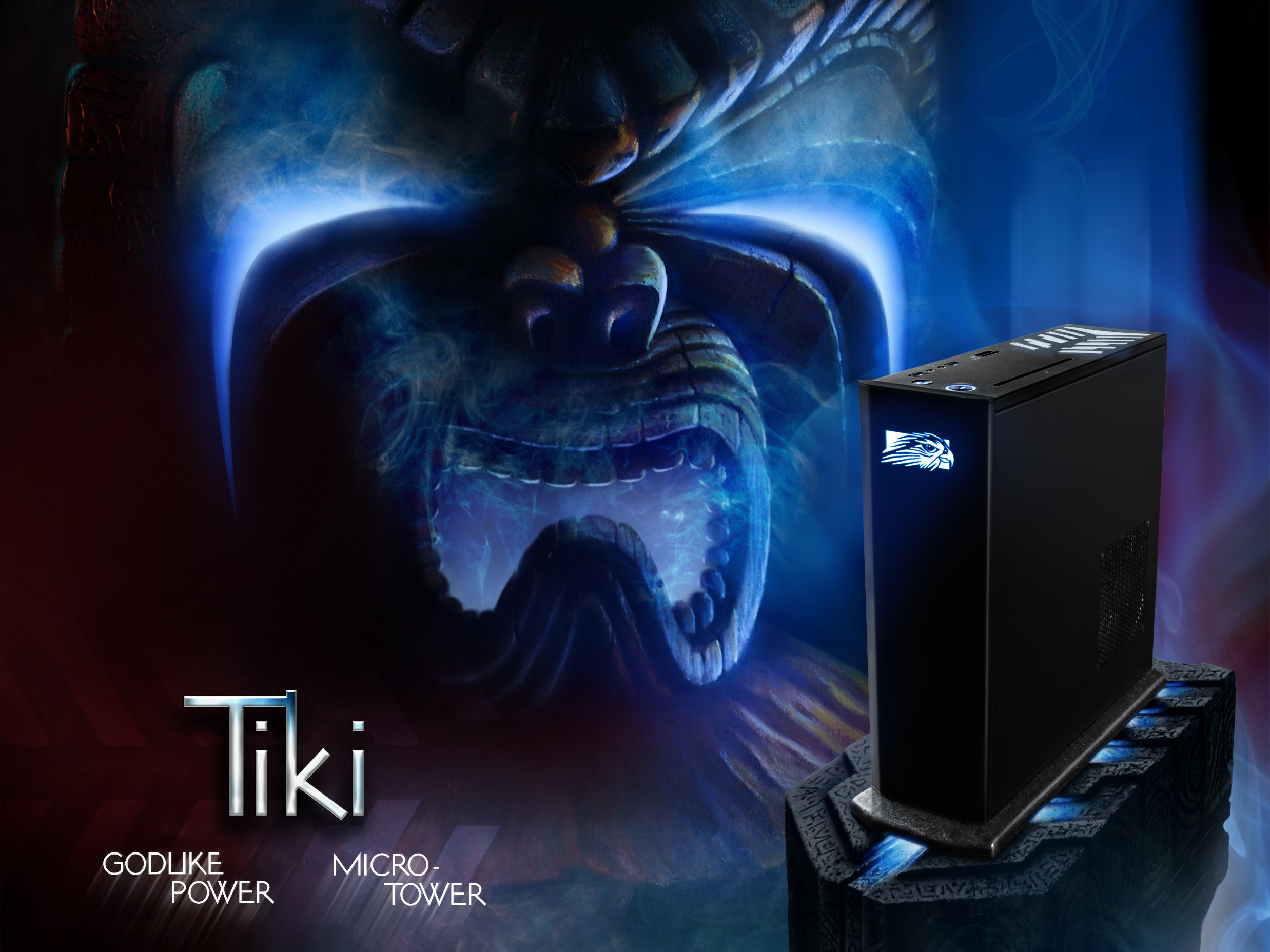Meet The Tiki: Core i7-3770K And GeForce GTX 680 In A Mini-ITX Box?
Falcon Northwest sent us a mini-ITX-based platform worthy of enthusiast lust. We asked the company's president, Kelt Reeves, to walk us through the process of designing a tiny desktop packing more performance than most power user-oriented rigs.
We Tried Feet
They’re plastic. They’re inexpensive. They’re light. They’re 92% useless.
So Instead, We Used Expensive Rocks
The Tiki needed more weight on the bottom to prevent from tipping over. That weight needed to look good and not affect the system’s footprint in a significant way. So, I approached the company that made the granite countertops for my kitchen with the idea for a Tiki base. See this ginormous machine? It cuts huge granite countertops with diamond-tipped bits. It’s made in Italy and costs $500 000. See that tiny rectangle of black stone at the man’s foot? That’s a Tiki base prototype. If I didn’t already know the nice family that runs this outfit and work with them in the past, they probably would’ve thrown me out on my butt after prototype change number three. Now we’re in production and cutting 100 Tiki bases from each eight-foot master slab of granite. But, for several months of making and re-making prototypes, this machine operator gave me dirty looks for setting up such a large piece of hardware for dinky 13” parts.
Now It Needs Edging And Polishing…
We used another few hundred thousand dollars’ worth of computerized machinery for edging and polishing. That water raining down off the machines is coolant, as cutting rocks with diamond bits causes a bit of friction.
A Beautiful Result
The granite base took months of tweaking to get right, and even now we’re still tweaking it. Just this week we figured out a way to attach the base without visible screws. Previously, that was only possible if we were willing to break one diamond drill bit per base cut. Generally, cost is our last concern. But that machine operator would’ve slashed my tires if he had to change all of those bits.
Final Thoughts
Most system-builder CEOs are probably much busier running their shops than designing cases and testing fans, but that’s why I like keeping Falcon Northwest a boutique. I’m an enthusiast at heart, and Tiki is our first product that literally could not be built by anyone but an enthusiast. If the wiring isn’t bound perfectly, Tiki doesn’t fit together. It’s only quiet if you use exactly the right fans. It doesn’t even work in a CAD model. But I built the system I wanted on my own desk. I firmly believe that, with the recent advancements in power efficiency and miniaturization, micro-towers will become the new mid-tower in a few years. I hope Tiki becomes a showcase of what can be done in this form factor.
My sincere thanks to Tom’s Hardware for allowing me to share Tiki’s backstory with you!
Get Tom's Hardware's best news and in-depth reviews, straight to your inbox.
Tom's Hardware is the leading destination for hardcore computer enthusiasts. We cover everything from processors to 3D printers, single-board computers, SSDs and high-end gaming rigs, empowering readers to make the most of the tech they love, keep up on the latest developments and buy the right gear. Our staff has more than 100 years of combined experience covering news, solving tech problems and reviewing components and systems.
-
freggo I usually do not bother with these 30+ page click stories. They are a pain in the arse.Reply
But.. that story just was too interesting, almost like a crime novel...
Just one more click and I stop.... ok, jut ONE more.
Anyway, it was interesting to see the painful birth of what seems to be a very interesting product; also I don't even want to guess how much $$$ we are talking all things considered.
Still, very interesting and impressive. Would love to see THG do a test, especially the noise part would interest me. I HATE noise and am willing to pay xtra for $ilence :-)
-
Robert Pankiw http://build.falcon-nw.com/Reply
I posted a really nice and long comment that magically got erased.. Basically, it is around 2500 USD for (what I assume) is the shown model (i7, 2 128GB SSDs + HDD, GTX 680 2GB) but for a nice system (i5, 1 256GB SSD, GTX 670) it is 2045 USD. -
s3anister ReplyTiki is our first product that literally could not be built by anyone but an enthusiast.
From reading your article I most definitely agree with you. Quite an amazing build.
And if you still need to get rid of some fans and heatsinks I'd be more than happy to take a few off your hands :D -
xaed Robert Pankiwhttp://build.falcon-nw.com/I posted a really nice and long comment that magically got erased.. Basically, it is around 2500 USD for (what I assume) is the shown model (i7, 2 128GB SSDs + HDD, GTX 680 2GB) but for a nice system (i5, 1 256GB SSD, GTX 670) it is 2045 USD.Reply
All things considered, that extra $500 (I'm thinking it's more assuming they get their parts at OEM rates) isn't THAT bad. -
abhijitkalyane Wow! Just WOW! This is awesome. This is a top of the line build but barely the size of an XBox. Amazing.Reply -
dakkon Toms please do a bench on this thing... Please Please Please... and Mr Falcon CEO Kudos to you, now give the damed machine to Toms and let them Bench it. :)Reply -
Darkerson Very interesting, both the article and the end result product. Would love to see some benchmarks when it is released.Reply -
Menigmand I love a small, quiet pc, but the biggest problem is not the actual size. The main aesthetic problem is that a pc setup will still include a monitor and plenty of wires, a keyboard and a mouse. Having a pc in a small livingroom tends to "take over" the space and make it seem a bit like an office.Reply
That's why I like to game on a laptop, even though I get less graphics performance, the kit can always be folded up and put in the cupboard when I have guests over and need the dining table.
